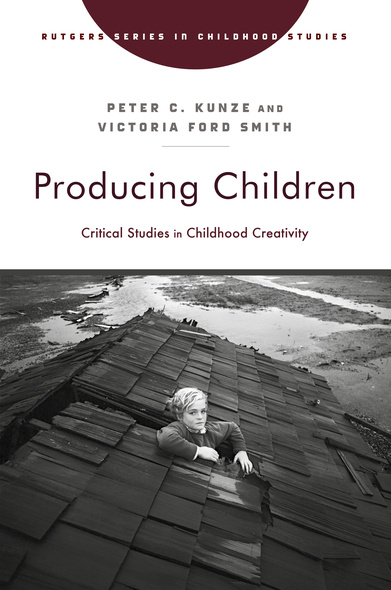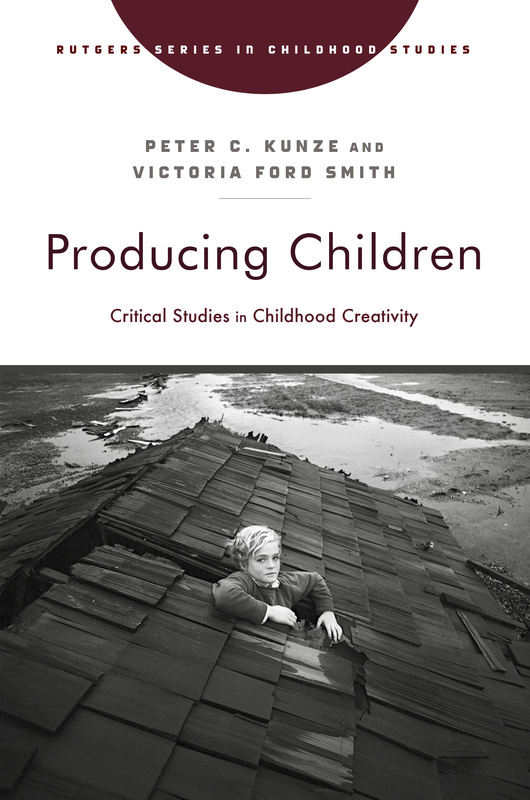
210 pages, 6 1/8 x 9 1/4
22 B-W images
Hardcover
Release Date:15 Apr 2025
ISBN:9781978842328
Producing Children
Critical Studies in Childhood Creativity
Edited by Peter C. Kunze and Victoria Ford Smith
Rutgers University Press
Producing Children imagines the possibility, indeed the inevitability, of a creative relation between children as producers and consumers by revising the long-established, hierarchical relation between adults and children. The chapters in this collection reveal that studying child-produced culture complicates our received understandings of children’s culture as culture by adults, for children, about children. They also underscore “children’s literature” as a cultural phenomenon that moves across and beyond genres, forms, and media. As a whole, this collection reveals that attention to child-produced culture invites dialogue and collaboration across fields and disciplines invested in the critical understanding of children as embodied beings and childhood as both a stage of development and discursive construct with social, political, economic, and cultural dimensions and influence. With the ongoing vibrancy of childhood studies as a multidisciplinary area of inquiry, studies of child-produced culture provide scholars with an exciting opportunity to complicate, enrich, and expand theorization of childhood creativity, children’s culture, and even children themselves.
A welcome and eye-opening collection of richly contextualized, multidisciplinary studies that push us to think more seriously about children as cultural producers. This timely anthology moves forward in exciting ways important conversations about children's cultural agency, creativity, and collaborations with adults.
PETER C. KUNZE is an assistant professor of communication at Tulane University in New Orleans, Louisiana. He is the author of Staging a Comeback: Broadway, Hollywood, and the Disney Renaissance (Rutgers University Press).
VICTORIA FORD SMITH is an associate professor of English at the University of Connecticut in Storrs. She is the author of Between Generations: Collaborative Authorship in the Golden Age of Children’s Literature.
VICTORIA FORD SMITH is an associate professor of English at the University of Connecticut in Storrs. She is the author of Between Generations: Collaborative Authorship in the Golden Age of Children’s Literature.
Introduction by Peter C. Kunze and Victoria Ford Smith
Part 1: Authorship
Chapter 1: Daisy Ashford and the Child Writer’s Use of Scale by Katharine Slater
Chapter 2: “I didn’t die and felt the Earth”: Nature and the Urgency of Perception for Young Black Poets in The Voice of the Children Workshop by Rachel Conrad
Chapter 3: Representations of Youth Environmental Activism and Agency in Aika Tsubota’s Secrets of the Earth by Brianna Anderson
Part 2: Performance and Play
Chapter 4: Phillis Wheatley’s Image and the Creative Black Child by Brigitte Fielder
Chapter 5: “[W]hen he saw the pencil put to paper”: The Meaning Making of Children’s Language in Depression-era Harlem by Maggie E. Morris Davis
Chapter 6: Creative Testimonio as Activism: A Case Study of Sophie Cruz and Sarai Gonzalez by Cristina Rhodes
Chapter 7: Child Actors as Authors and Collaborators in Contemporary World Cinema by Peter C. Kunze
Part 3: Collaboration and Co-creation
Chapter 8: ‘Mostly Written By’: A Cookbook Model for Reading Children’s Art by Ivy Linton Stabell
Chapter 9: Negotiating Nightmares: Improvising with Children in Arthur Tress’s The Dream Collector by Victoria Ford Smith
Chapter 10: Choreographing Kinship: The Adult-Child Pas de Deux in Day on Earth and Lineage by Marah Gubar
Chapter 11: Charli, Charlie, and I: An Autoethnographic Study of TikTok Dance and Child/Adult Collaborations by Trevor Boffone
Notes on Contributors
Index
Part 1: Authorship
Chapter 1: Daisy Ashford and the Child Writer’s Use of Scale by Katharine Slater
Chapter 2: “I didn’t die and felt the Earth”: Nature and the Urgency of Perception for Young Black Poets in The Voice of the Children Workshop by Rachel Conrad
Chapter 3: Representations of Youth Environmental Activism and Agency in Aika Tsubota’s Secrets of the Earth by Brianna Anderson
Part 2: Performance and Play
Chapter 4: Phillis Wheatley’s Image and the Creative Black Child by Brigitte Fielder
Chapter 5: “[W]hen he saw the pencil put to paper”: The Meaning Making of Children’s Language in Depression-era Harlem by Maggie E. Morris Davis
Chapter 6: Creative Testimonio as Activism: A Case Study of Sophie Cruz and Sarai Gonzalez by Cristina Rhodes
Chapter 7: Child Actors as Authors and Collaborators in Contemporary World Cinema by Peter C. Kunze
Part 3: Collaboration and Co-creation
Chapter 8: ‘Mostly Written By’: A Cookbook Model for Reading Children’s Art by Ivy Linton Stabell
Chapter 9: Negotiating Nightmares: Improvising with Children in Arthur Tress’s The Dream Collector by Victoria Ford Smith
Chapter 10: Choreographing Kinship: The Adult-Child Pas de Deux in Day on Earth and Lineage by Marah Gubar
Chapter 11: Charli, Charlie, and I: An Autoethnographic Study of TikTok Dance and Child/Adult Collaborations by Trevor Boffone
Notes on Contributors
Index




